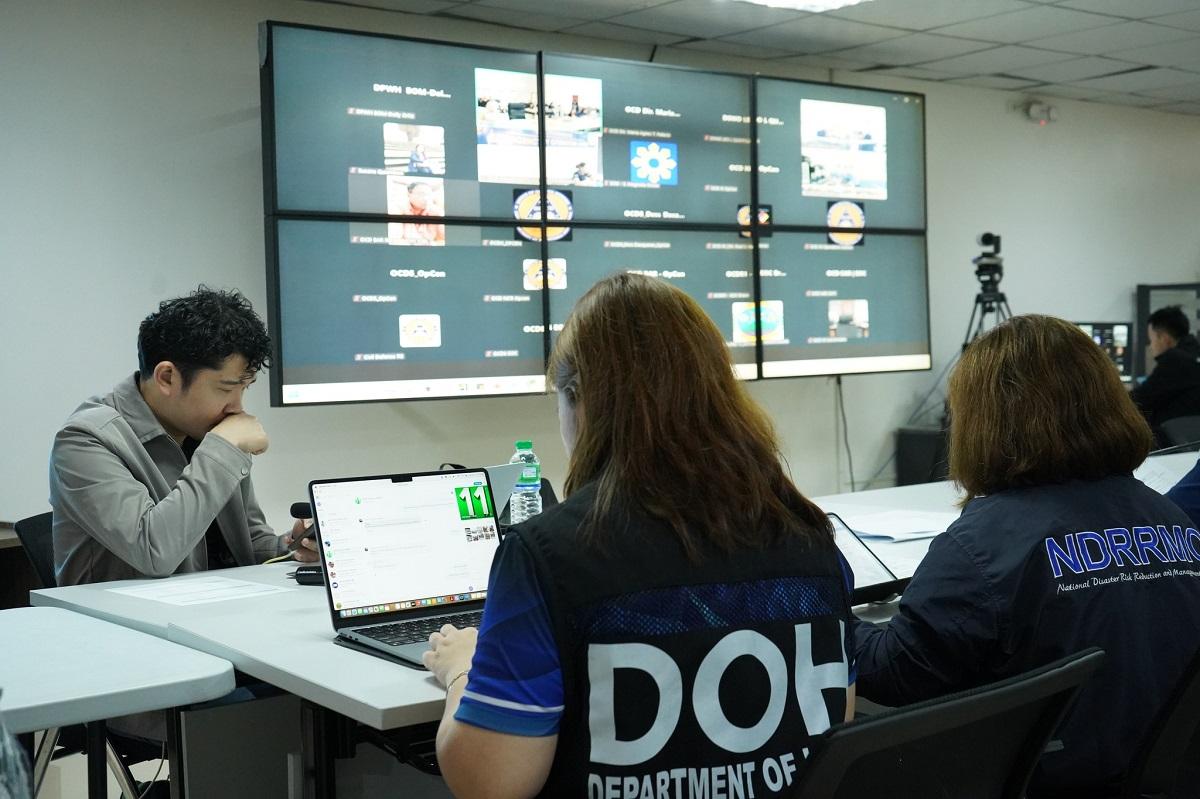Filtered By: Topstories
The National Disaster Risk Reduction and Management Council (NDRRMC) has raised the alert status of its Operations Center to red, and activated response clusters to assign lead agencies to manage response operations.
In a statement released Sunday, the NDRRMC said the response clusters were activated at 12:00 p.m. on Friday in response to the major earthquakes in Manay, Davao Oriental.
The NDRRMC is administered by the Office of Civil Defense (OCD). The raising of red alert status tasks the OCD to take charge of logistics and early recovery, and the Department of Social Welfare and Development (DSWD) for food and non-food items, camp coordination and management, and internally displaced persons protection.
“Raising the status to the highest alert level required duty officers from the AFP, the PNP, the Bureau of Fire Protection (BFP), and the Philippine Coast Guard (PCG), as well as technical personnel from the DILG, DSWD, DPWH, and DOH to render duty at the physical operations center in Camp Aguinaldo. Other concerned agencies joined the emergency operations via a virtual platform,” the OCD said.
The Armed Forces of the Philippines (AFP) is tasked to lead search, rescue, and retrieval operations, the Department of Health (DOH) on health concerns, the Philippine National Police (PNP) on law and order, and the Philippine Information Agency (PIA) on crisis communications.
The Department of Information and Communications Technology (DICT) is ordered to lead in emergency telecommunications, the Department of Public Works and Highways (DPWH) on debris cleaning and civil works, and the Department of Human Settlements and Urban Development (DHSUD) on shelter.
The Department of Foreign Affairs (DFA) is on standby for Philippine international humanitarian assistance, and the OCD for early recovery.
This comes as the NDRRM Operations Center also raised its alert status to red, requiring duty officers from the AFP, PNP, the Bureau of Fire Protection (BFP), and the Philippine Coast Guard (PCG) to render duty at the physical operations in Camp Aguinaldo.
Also mandated are technical personnel from the DILG, the DSWD, the DPWH, and DOH.
“I have directed the National Disaster Risk Reduction and Management Council, the Office of Civil Defense, the Armed Forces, the Philippine Coast Guard, and all concerned agencies to immediately carry out evacuations in coastal areas, activate emergency communication lines, and coordinate closely with local governments,” the President was quoted as saying.
Review of contingency plans
The Defense Secretary has also ordered the enhancement of earthquake preparedness across the country, and the review of local contingency plans following the recent earthquakes that hit Cebu and Davao.
According to the Office of Civil Defense (OCD), the Secretary called for the review of local contingency plans to ensure that all disaster protocols of local government units (LGUs) within their areas of responsibility (AOR) are validated and updated.
They were also urged to hold wide-scale earthquake drills, specifically in public areas including schools, government offices, and other facilities to strengthen safety readiness.
“For areas that were not hit by the earthquake, please tell the LGUs to review or practice their earthquake drill protocols,” the Secretary was quoted as saying.
This comes as a magnitude 7.4 earthquake struck offshore Manay, Davao Oriental on October 10, followed by a magnitude 6.8 offshore earthquake.
A magnitude 4.4 earthquake also occurred on October 9, while a magnitude 6.0 earthquake occurred late Saturday night on October 11.
Before these, the strongest earthquake ever recorded in the area occurred on October 1, with a depth of 5 kilometers and tectonic in origin.
Latest data from the OCD shows that the earthquakes have affected 125,283 families or 491,258 individuals in the Davao Region and Caraga, with eight reported deaths and 395 injuries. Total estimated damages were pegged at P100 million.
Some areas






